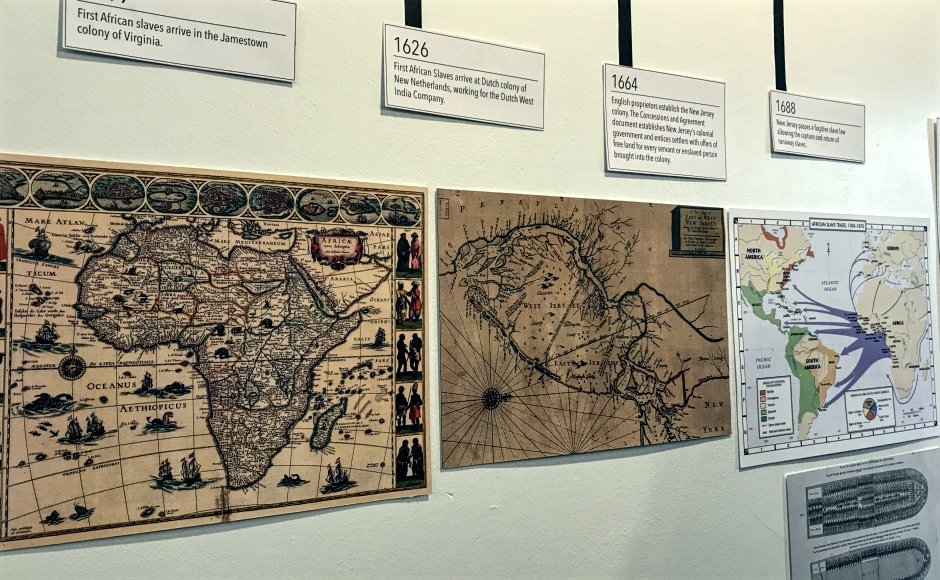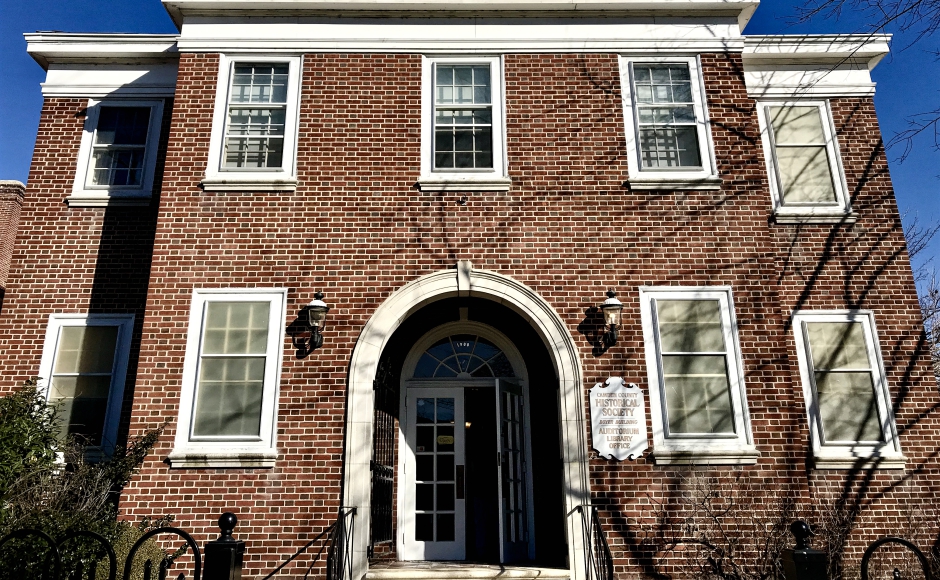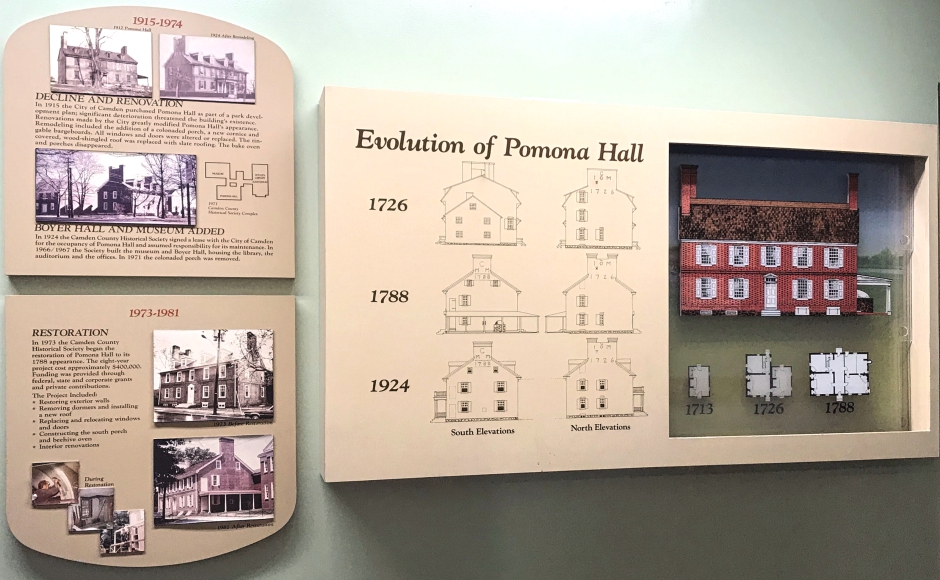The exhibit occupies the first space the society has exclusively dedicated to non-white local history.
By Abby Schreiber | January 22, 2018
Since 1899, Camden County has charted the passage of its local history on the grounds of Pomona Hall, a colonial mansion nestled in the heart of Camden City.
As both a local museum and the headquarters of the Camden County Historical Society (CCHS), Pomona Hall has, for many years, presented Camden City through the lens of its own Quaker past.
CCHS Executive Director Jack O’Byrne said that “doesn’t really connect with people today.
“We’re in a majority African-American and Hispanic city, and a lot of people that live here say, ‘What does that [Quaker past] have to do with us?’” O’Byrne said.
On January 14, CCHS opened its African-American History Room at the former Pomona Hall caretaker’s house. It’s the first permanent exhibit space the society has dedicated to telling “the whole history of Camden County and Camden City,” said CCHS Library Director Bonny Beth Elwell.
Until 1795, Pomona Hall was the centerpiece of a plantation worked by slaves and indentured servants.
As it is situated today in a predominantly non-white community, O’Byrne believes CCHS must reconcile those facts.
“I think it’s important for us, just as they do at Mount Vernon for Washington or Monticello for Jefferson, to deal with our past,” O’Byrne said.
“We’ve made a concerted effort to reposition our exhibits.”
The first exhibit, entitled “The Moores of Greenland,” features the story of Robert Moore, who established a family in Greenland, the area now known as Magnolia. At one point, Moore had been a slave in Burlington County; today, his lineage spans three centuries of family members known for their outsized dedication to the area.
“The Moores have given over 250 years of history and service to the community,” O’Byrne said. “We tell their story along with the overlay of what was going on in the country.”
The Moore family “contributed to the early development of the unique free black community of Lawnside,” the exhibit notes. Its members have done everything from providing medical assistance to those in need to winning the Congressional Medal of Honor for exceptional military service.
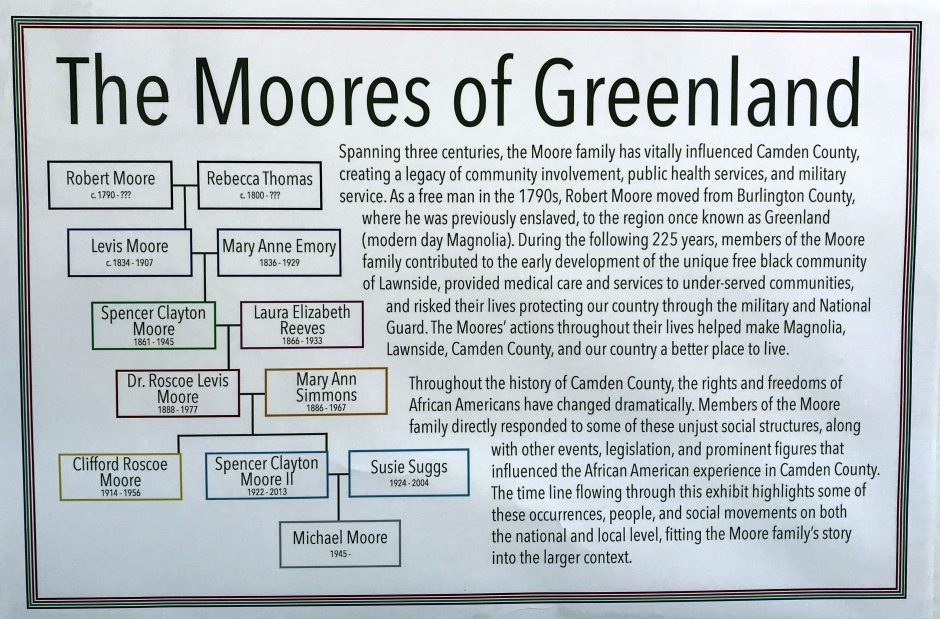
“The Moores of Greenland” is the first exhibit in the African-American History Room at the Camden County Historical Society. Credit: Abby Schreiber.
“There’s still lots of relatives of the Moore family who will be coming to this exhibit,” O’Byrne said.
Permanently affixed to the walls of the African-American History Room is a timeline chronicling the history of black America, from 1619 in Jamestown to present-day Camden, as well as a wall of short biographies on notable locals like Octavius Catto and Dr. Ulysses Wiggins.
O’Byrne believes CCHS must play a larger role as a living institution of cultural heritage; to do that means expanding its focus beyond industrial-era Camden into the stories of its present-day citizens.
“In a nutshell, we’ve repositioned who we are in order to deepen and broaden our audience,” he said. “We hope to better connect with Camden and what Camden County is today.
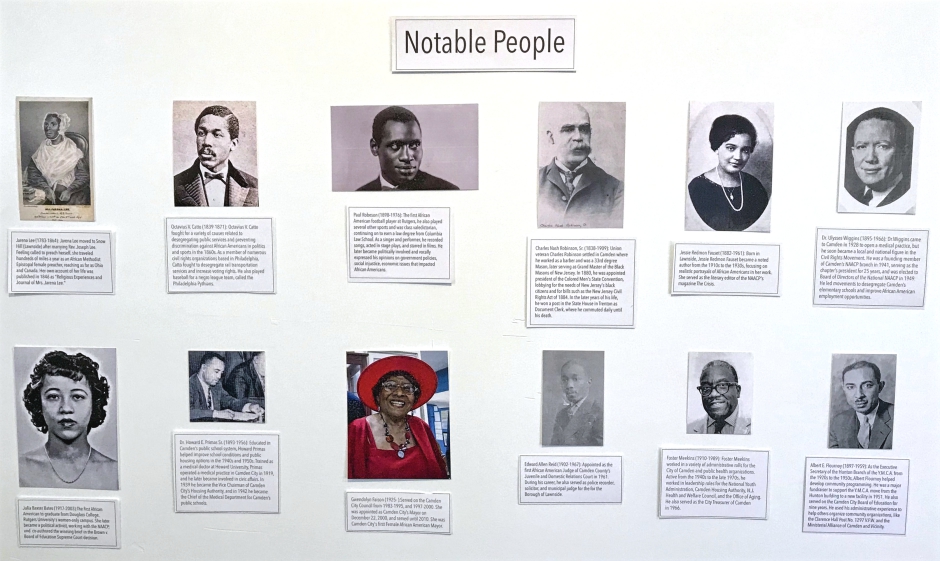
The African-American History Room at the Camden County Historical Society contains a list of local notables. Credit: Abby Schreiber.
“How do we do that? Well, we can start by telling their stories and the stories of all the people, not just rich, white, northern Europeans.”
The African-American History Room was funded as part of $120,000 in capital renovations to Pomona Hall paid for by community block development grant funds from the city of Camden.
“The Moores of Greenland” is funded by the Rohrer Foundation, Subaru Foundation, and the Wells Fargo Foundation, and runs through 2018.
CCHS is located at 1900 Park Boulevard, Camden. Hours are 10 a.m. to 4:30 p.m. Wednesday to Friday, and 12 p.m. to 3 p.m. Sunday.


